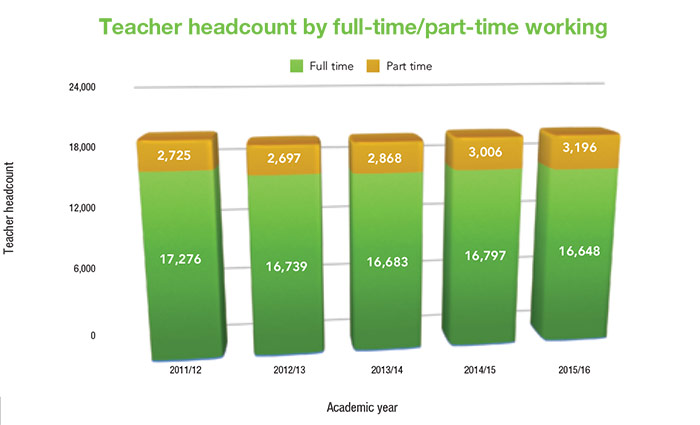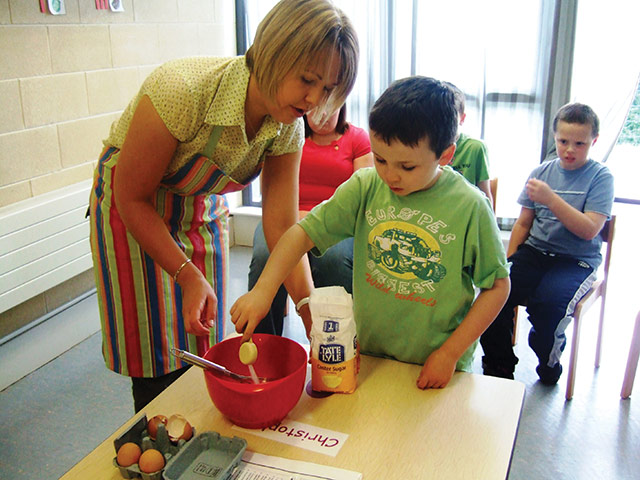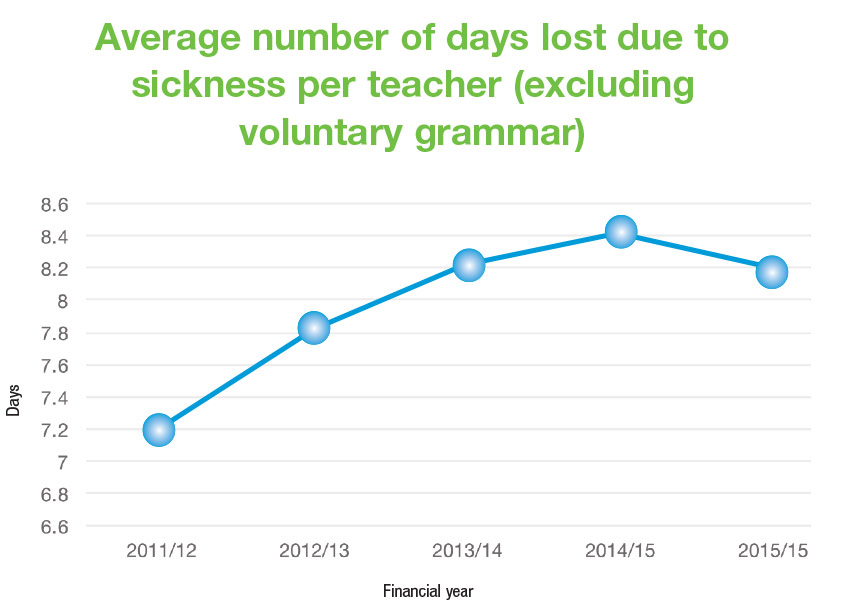The teaching workforce

agendaNi outlines the latest annual statistics released by the Department of Education relating to teachers working in grant-aided schools.
The most striking statistic to come out of the figures for 2015/16 is the low proportion of male teachers in the earliest levels of education in Northern Ireland, including a complete absence of male teachers in the nursery sector. The 2015/16 teacher survey reveals that females make up 76.8 per cent of the overall teacher workforce compared to 23.2 per cent of males. As well as having no representation at nursery level, males make up just 15.4 per cent of primary and preparatory schools compared to 31.3 per cent at post-primary level.
Overall, the number of full-time equivalent (FTE) teachers, which at the end of the academic year sat at 18,579, represents a slight decrease after three years of increase totalling 252 teachers. The number of FTE teachers fell in preparatory departments of grammar schools and secondary schools but increased in primary, grammar and special schools. Part-time teachers made up 16.1 per cent of the 19,844 total of both FTE and part-time teachers, representing an increase annually from the 13.6 per cent recorded in 2011/12.

The median age of the teaching workforce in Northern Ireland increased over the year from 41.2 years to 41.4 years and the ageing workforce and opportunities abroad for young teachers are highlighted in the statistic that only 11.6 per cent of teachers are under the age of 30, a drop of 1.5 per cent in the past five years. A linear look at the age brackets in decades shows that there is small changes in the three core age groups stretching from 30 to 59.
The gender gap between male and female teachers also stretches into school management. Male principals (38.4 per cent) and vice principals (31.4 per cent) make up a low portion of nursery, primary and preparatory schools. However in post-primary schools 55.7 per cent of principals are male, as are 42.2 per cent of vice principals.

Pupil teacher ratio
The pupil teacher ratio (PTR) for Northern Ireland has stayed fairly consistent over the past five years and a slight increase to 17.6 per cent in 2015/16 is quantified by an increase of 2,000 pupils overall and 20 less FTEs. Post-primary is the only sector to record a decrease in PTR, while the biggest increase (1.7 pupils per teacher) is evident in preparatory departments of grammar schools. Although not directly comparable, a rough comparison shows that Northern Ireland’s PTR is lower than schools in England and Wales but higher than Scotland.

Vacancies and sickness
Of the 919 vacancies recorded at the end of the 2014/15 academic year, 77.8 per cent were filled by November 2015, with the largest portion of unfilled vacancies arising in the nursery, primary and preparatory departments of grammar schools. There was a dramatic improvement in filling vacancies in special schools, with 23 per cent remaining unfilled, compared to almost 50 per cent the previous year.
Teachers in Northern Ireland averaged 8.2 sick days (the overall UK average was reported to be 1.85 days for 2015), with the largest number of days lost due to sickness occurring in special schools (13.7 days) and the lowest in grammar (five days). The 8.2 figure represents a slight fall from the previous year but is an average one day increase than five years ago.
Substitution teacher costs fell by £75,000 over the year but remain at £67,280,334, significantly higher than the £52,736,582 recorded in 2006/07. Of the total annual cost, sickness is estimated to have accounted for £13 million, maternity, paternity and adoption cost £14 million and filling vacant posts cost £13.7 million. Substitutes made up 19.9 per cent (466,724 days) in 2015/16.
The number of teachers who opted for early retirement but returned as substitutes made up 2.2 per cent of the total days worked. That number is steadily decreasing from the 2008/09 high of 14.6 per cent.





